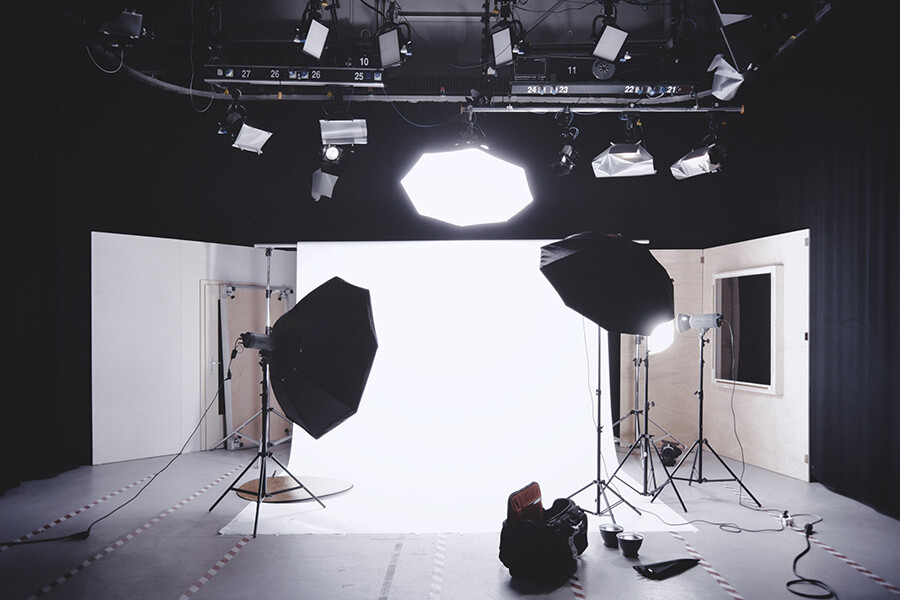- Accueil
- La recherche
- Mémoires et Travaux de fin d’études
- Le codage MPEG Surround et ses applications à une diffusion télévisuelle
Le codage MPEG Surround et ses applications à une diffusion télévisuelle
Auteur : Annabelle Negro
Directeur(s) de mémoire : Claude Gazeau & Manuel Naudin
Son
Résumé : Depuis sa naissance dans les années 1930 avec une seule chaîne en noir et blanc et seulement quelques heures de programmes par jour, la télévision a beaucoup évolué et notamment durant cette dernière décennie avec l’arrivée de la télévision numérique terrestre, l’arrêt de la diffusion analogique, le développement de la télévision par les fournisseurs d’accès à Internet, et tous les services désormais proposés : télévision de rattrapage, vidéo à la demande, télévision connectée, etc. On peut désormais regarder la télévision sur différents supports : écran plat, ordinateur, tablette numérique, smartphone. La télévision numérique terrestre haute définition supporte la diffusion
d’une image haute définition et de l’audio multicanal (5.1), tandis que la diffusion en définition standard ne permet qu’une image en définition standard et un son stéréophonique. De plus, les chaînes fournissent aussi leur signal à des fournisseurs d’accès à Internet, ainsi qu’à des sous-traitants qui gèrent les services de télévision de rattrapage. La multiplication des supports de diffusion oblige alors la cohabitation de différents formats, tant pour l’image que pour l’audio. Le MPEG Surround est un format de codage audio multicanal, de type « surround-parametric », qui permet d’encoder un signal multicanal 5.1 en un flux audio encapsulé en MPEG-4, qui contient un signal audio stéréophonique, ainsi qu’un flux de données qui renferme les informations de spatialisation. Ce format permet alors une diffusion audio multicanale sur des vecteurs limités en bande passante, tels que la télévision numérique terrestre en définition standard, le streaming et la vidéo à la demande. Ce format garantit une parfaite compatibilité 5.1/stéréo sur la plupart des lecteurs multimédias grand public, qui pourrait éviter une double diffusion, ainsi qu’une compatibilité binaurale. Je vais débuter ce mémoire par un rapide état des lieux du son à la télévision, à savoir les formats de diffusion actuels, les différents services proposés, et les équipements audio des Français. Ensuite, je rappellerai les mécanismes de perception auditive humaine des sons spatialisés. Puis, je présenterai plusieurs aspects du codage MPEG Surround : les étapes d’encodage et de décodage, les algorithmes utilisés, les paramètres réglables, ainsi que le fonctionnement du plugin Fraunhofer Pro-Codec de Sonnox. Enfin, je détaillerai mon protocole de tests perceptifs, qui devra permettre de déterminer les paramètres de codage satisfaisants du MPEG Surround (débit, format), ainsi que l’impact des étapes d’encodage et de décodage sur les paramètres de la recommandation R128, que tous les programmes télévisés doivent dorénavant respecter. Je devrai donc établir si sa qualité est suffisante et s’il pourrait être utilisé dans la diffusion audio de programmes télévisés dans les années à venir.
Mots-clés : MPEG Surround. Multicanal. Diffusion. Encodage. Télévision.
—
Abstract: Since its birth in the 30’s with just one black and white channel and only a few hours of programmes every day, television has progressed rapidly, in particular during the last decade with the arrival of digital terrestrial television, analogue broadcasting switchoff, the development of television services by the Internet Access Providers, plus all the other services now offered: replay television, video on demand, connected television, etc. Television can now be watched on different platforms: flat-screen TV, computer, touchpad and smartphone. High definition digital terrestrial television allows the broadcast of a high definition image and multi-channel audio (5.1), whereas standard definition broadcast allows only for a standard definition image and stereophonic sound. Moreover, the TV channels also provide their signal feed to the Internet Access Providers, and to subcontractors who handle replay TV services. This multiplication of methods of diffusion requires cohabitation between the different formats, for image as much as sound. MPEG Surround is a multi-channel audio coding format, a type of « surround parametric » that allows a multi-channel 5.1 signal to be encoded in an MPEG-4 encapsulated bit-stream, which contains an audio stereophonic signal, as well as a data stream containing the spatialization data. This format allows for a multi-channel audio broadcast on low-bandwidth vectors, such as standard definition digital television, streaming, and video on demand. This format guarantees a perfect 5.1 multichannel/stereo compatibility on most consumer media players, which is able to avoid a double broadcast, and maintain binaural compatibility. I will begin this Master’s thesis by a short review of sound in television, bearing in mind the current broadcasting formats, the different services offered and French audio equipment. Then, I will refer to the mechanisms of human audio perception for spatialized sound. Next, I will present several features of the MPEG Surround coding: the coding and decoding stages, the algorithms used, the adjustable parameters, as well as the functioning of the Sonnox Fraunhofer Pro-Codec plugin. Finally, I will explain my protocol for the perceptive tests in detail, which must be able to determine satisfactory MPEG Surround parameters (bitrate, formats), as well as the impact of the coding and decoding stages on the parameters of the R128 recommendation, which all televised programmes must observe from now on. I will have to determine if the audio quality is sufficient and if MPEG Surround could be used for audio in televised programmes broadcast over the next few years.
Keywords: MPEG Surround. Multi-channel. Broadcast. Coding. Television.



